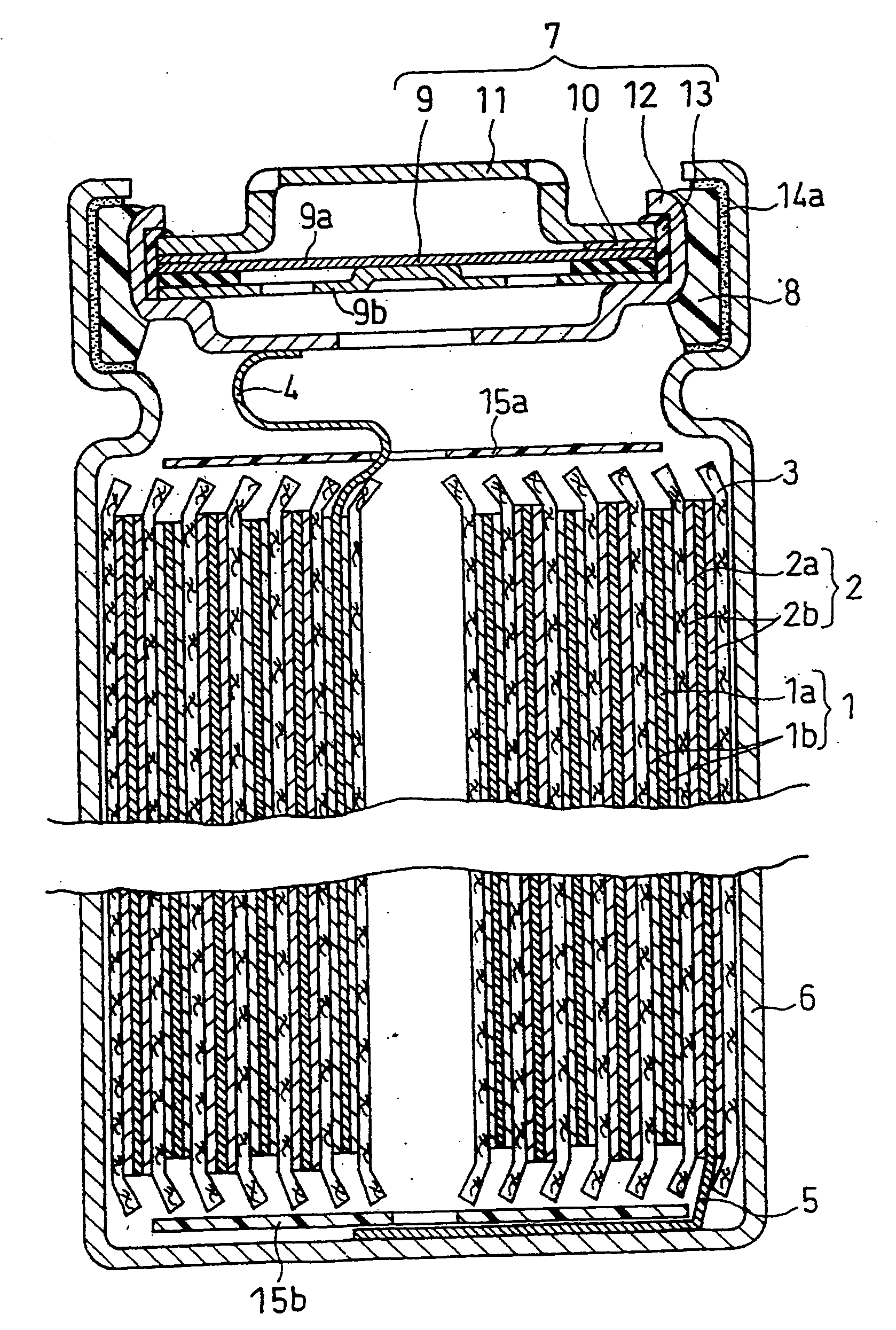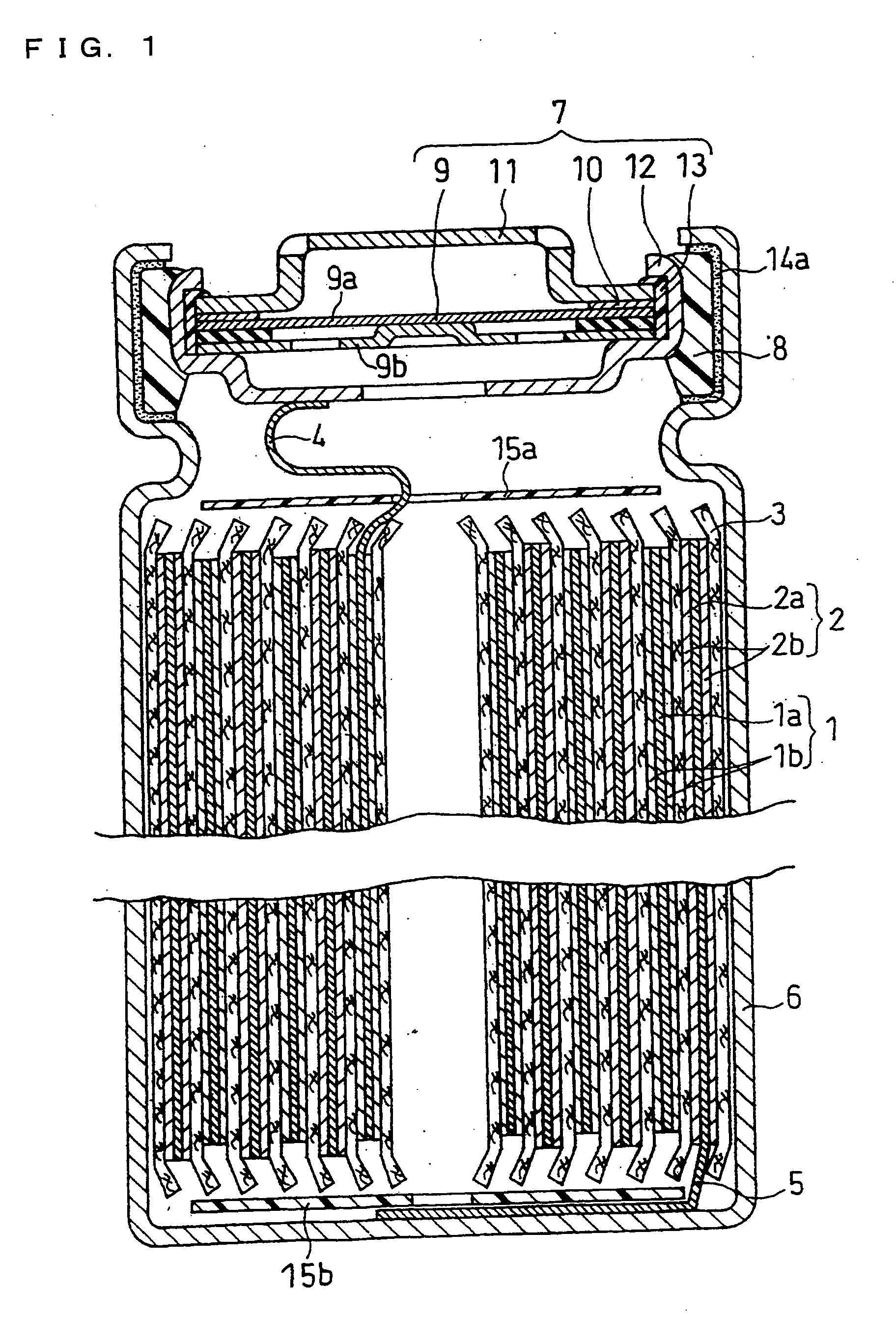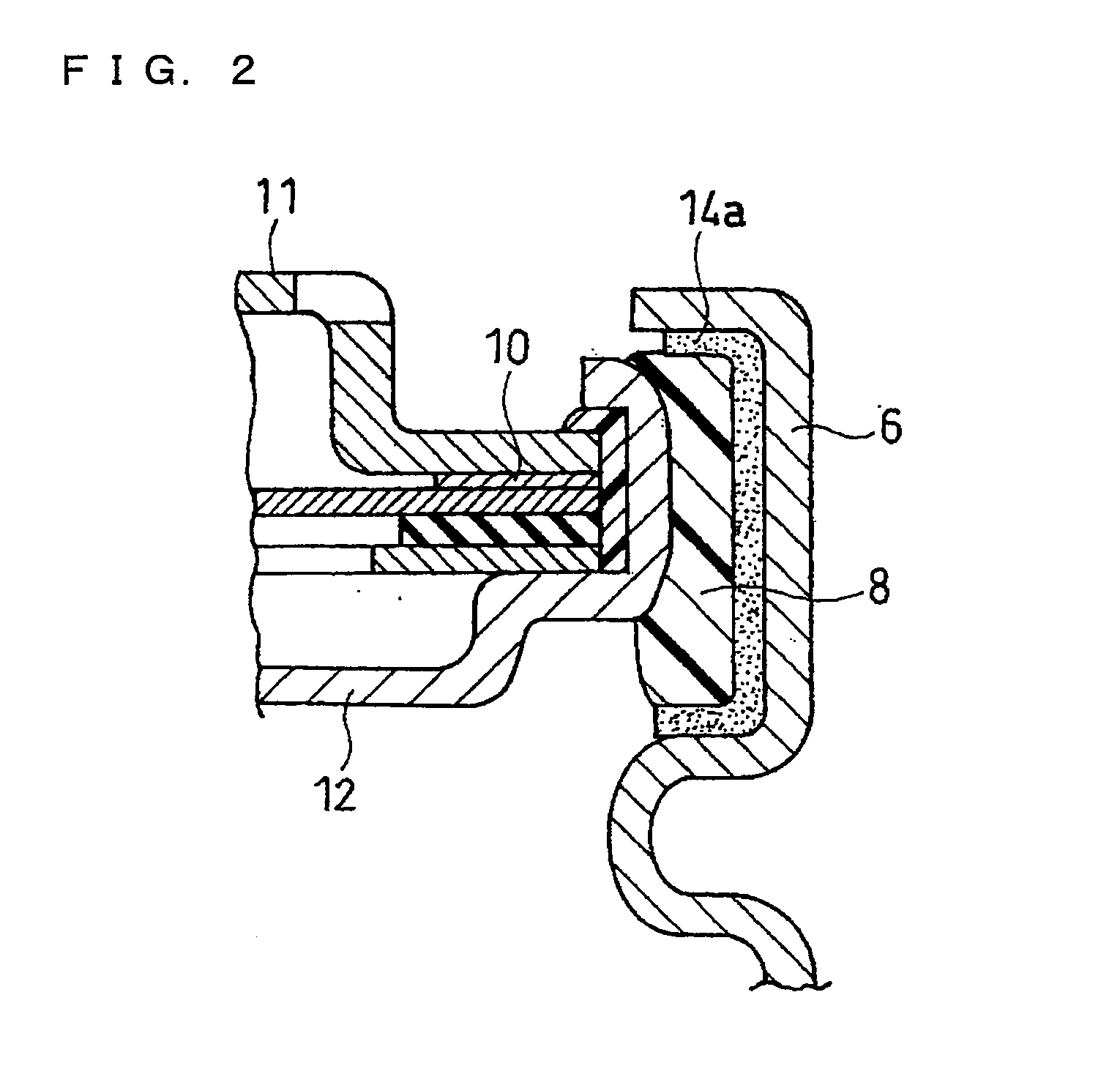Battery
- Summary
- Abstract
- Description
- Claims
- Application Information
AI Technical Summary
Benefits of technology
Problems solved by technology
Method used
Image
Examples
example 1
[0126](a) Production of Positive Electrode
[0127]Lithium cobaltate (LiCoO2) having an average particle size of 10 μm was used as a positive electrode active material. First, 100 parts by weight of the positive electrode active material, 8 parts by weight of polyvinylidene fluoride (PVDF) serving as a binder, 3 parts by weight of acetylene black serving as a conductive agent, and an appropriate amount of N-methyl-2-pyrrolidone (NMP) were mixed together, thereby to prepare a positive electrode material mixture paste.
[0128]The positive electrode material mixture paste was applied on both surfaces of an aluminum foil of 600 mm in length, 54 mm in width, and 20 μm in thickness serving as a positive electrode current collector, except an area to be a positive electrode lead connecting portion, and then dried, whereby a positive electrode was produced. The thickness of the positive electrode active material layer formed on each surface of the positive electrode current collector was 70 μm. ...
example 2
[0144]The highly-resistive layer paste was applied onto the convex surface of the step of the battery case, and then dried at 120° C. in a reduced pressure under vacuum for 10 hours. In such a manner, a third highly-resistive layer having a thickness of 20 μm was formed on the convex surface of the step of the cylindrical battery case.
[0145]A cylindrical lithium ion secondary battery was fabricated in the same manner as in Example 1 except that the foregoing battery case was used.
example 3
[0146]The highly-resistive layer paste was applied onto the end of the opening-edge portion of the battery case, and then dried at 120° C. in a reduced pressure under vacuum for 10 hours. In such a manner, a fourth highly-resistive layer having a thickness of 20 μm was formed on the end of the opening-edge portion of the cylindrical battery case.
[0147]A cylindrical lithium ion secondary battery was fabricated in the same manner as in Example 1 except that the foregoing battery case was used.
PUM
 Login to View More
Login to View More Abstract
Description
Claims
Application Information
 Login to View More
Login to View More - R&D
- Intellectual Property
- Life Sciences
- Materials
- Tech Scout
- Unparalleled Data Quality
- Higher Quality Content
- 60% Fewer Hallucinations
Browse by: Latest US Patents, China's latest patents, Technical Efficacy Thesaurus, Application Domain, Technology Topic, Popular Technical Reports.
© 2025 PatSnap. All rights reserved.Legal|Privacy policy|Modern Slavery Act Transparency Statement|Sitemap|About US| Contact US: help@patsnap.com



